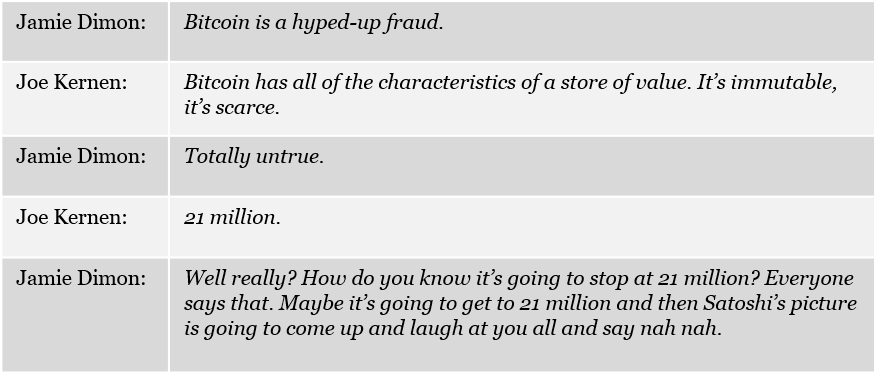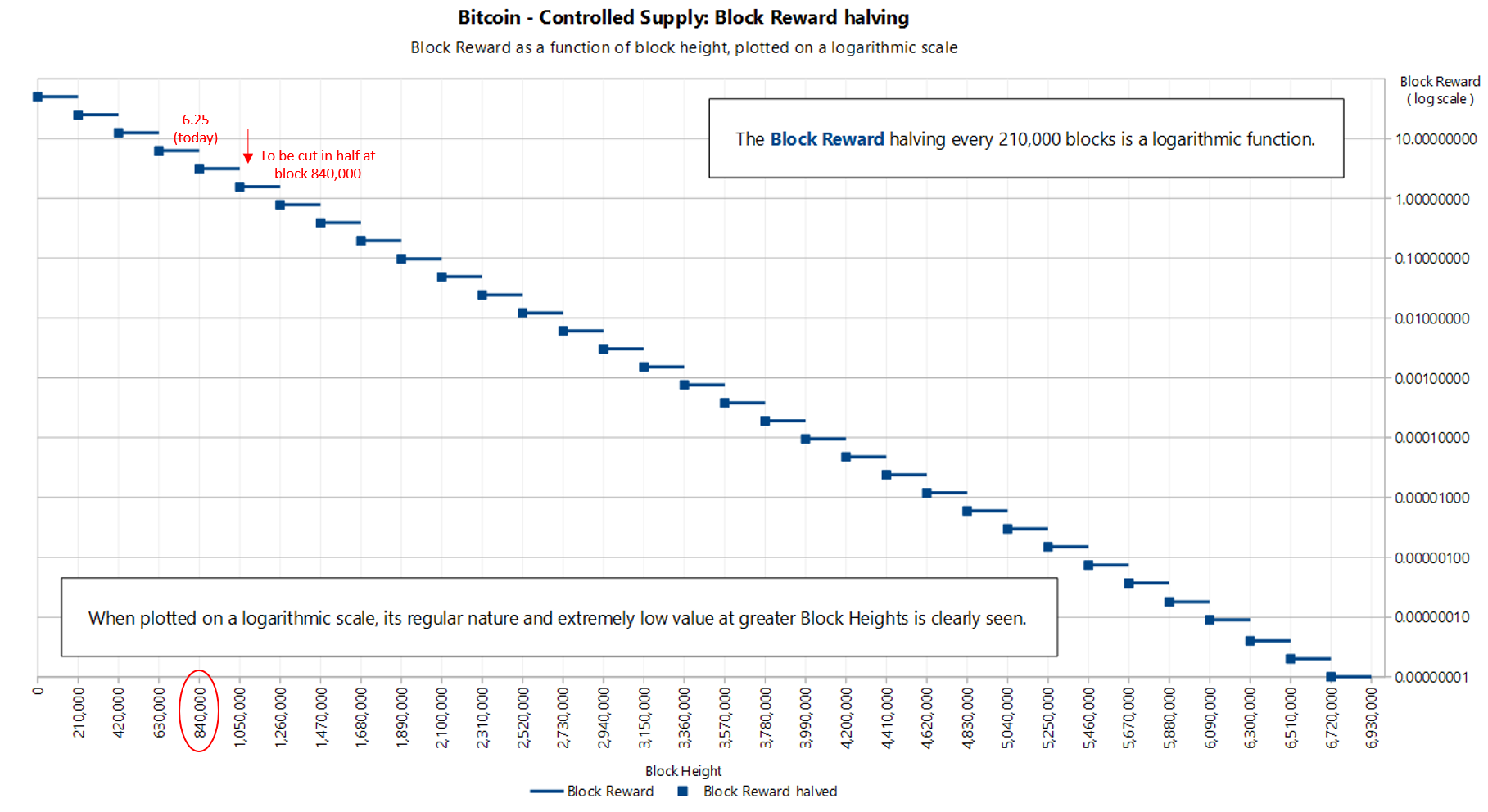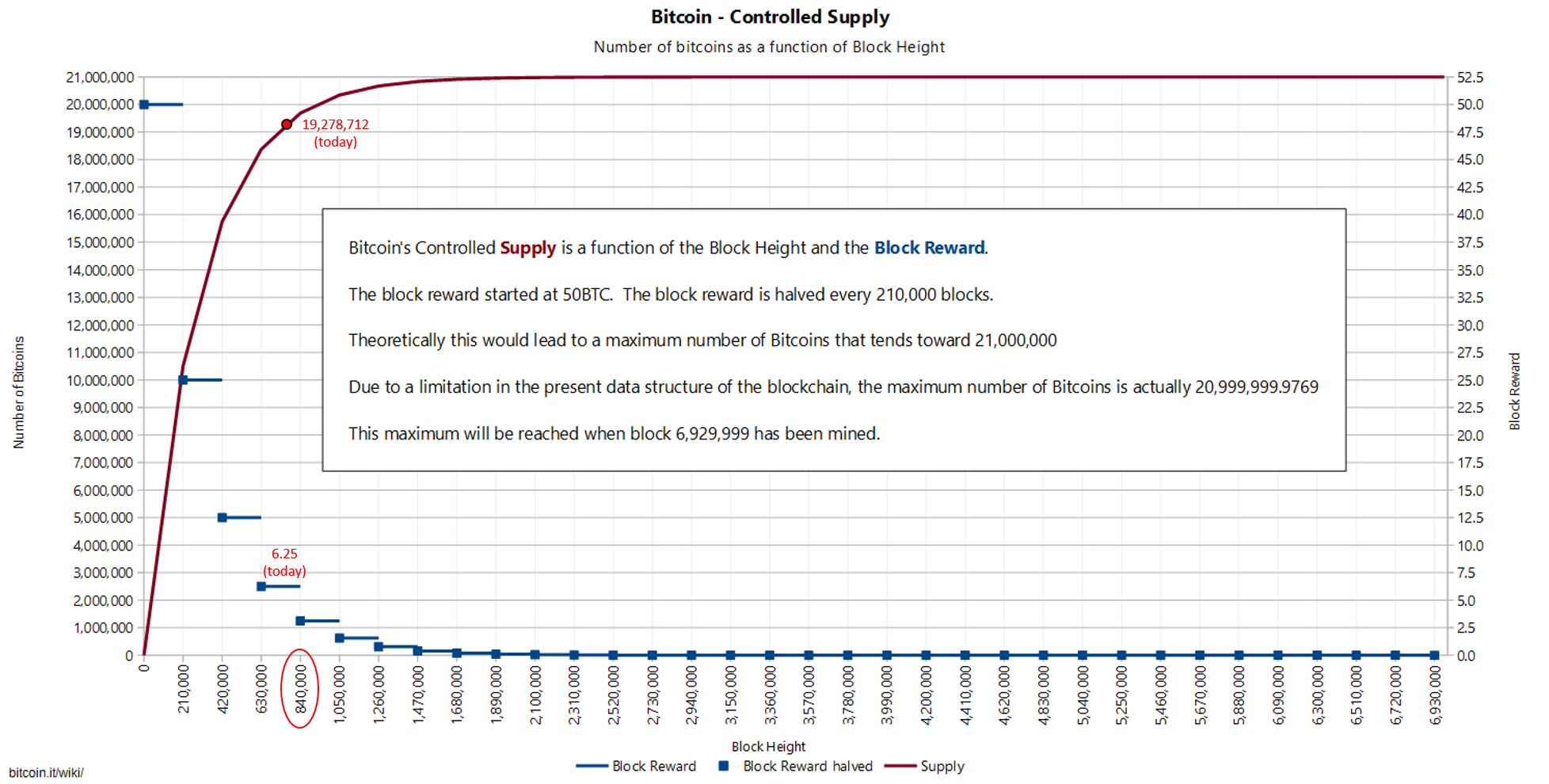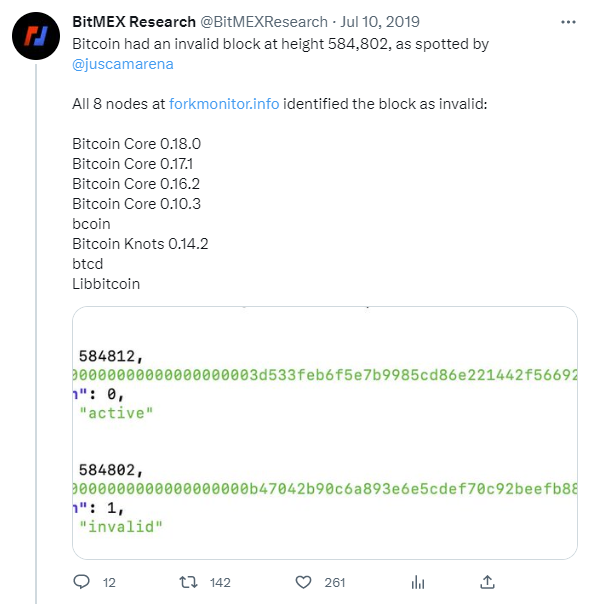Jamie Dimon, 21 million bitcoin

In 2017, Jamie Dimon famously called bitcoin a fraud. Then in 2019, Dimon walked that back, saying he regretted calling bitcoin a fraud. Flip-flopping again, Dimon is back to thinking bitcoin is a fraud. Specifically, he said that bitcoin is a hyped-up fraud just a few weeks ago at Davos during the World Economic Forum 2023 annual meeting.
The exchange went like this between CNBC’s Joe Kernen and JP Morgan CEO, Jamie Dimon:


It was a short exchange but while the headline might have been Jamie Dimon calling bitcoin a hyped-up fraud, he actually said a lot more than met the eye. When Joe Kernen brought up bitcoin’s scarcity, Dimon’s quick response was, “totally untrue.” Kernen then noted bitcoin’s fixed supply of 21 million to reinforce his point about scarcity. Dimon fired back, questioning the credibility of the fixed supply. How do you know it’s going to stop at 21 million?
As his comments establish, the 21 million fixed supply cap is without doubt relevant to Jamie Dimon’s evaluation of bitcoin. Dimon just doesn’t believe it is credible. If the fixed supply cap were not relevant to his view of bitcoin’s value, his response that it was “totally untrue” would have had no bearing on the conversation. Why say it if it’s not relevant? The fixed supply of bitcoin either is or is not relevant, and it’s clearly relevant to Jamie Dimon. Based on Dimon’s logic, if it were true, what would the consequence be?
Separately, Dimon’s comments establish that he does not have a framework to evaluate how bitcoin enforces its fixed supply. It’s not that he evaluated it and came to a different conclusion. His comments themselves communicate a framework that is objectively inconsistent with how bitcoin actually enforces a fixed supply of 21 million. It’s one thing to make an argument that the mechanism(s) which enforce bitcoin’s fixed supply will fail, which is not what Dimon did, and it’s another thing entirely to say, “how do you know it’s going to stop at 21 million?”
Dimon’s framework suggests that the credibility of bitcoin’s fixed supply will not, and cannot, be known until the 21 million cap is reached. His comment implies an understanding of bitcoin’s issuance like a running linear clock of issuance. How do you know 21 million and 1 will not be minted, or 2, or an additional million? The last bitcoin (technically a fraction thereof) will not be mined until approximately 2138 (100+ years). How could you know that a fixed supply of 21 million will be enforced until the counterfactual does not happen? You can’t know, can you?
That’s the thing. You can know and you don’t have to wait for 100 years. Jamie Dimon just doesn’t understand how, today. Bitcoin are issued on average every 10 minutes with each passing bitcoin block. The bitcoin issued (or to be issued) in each block are set on a fixed schedule; each block is produced–or solved–on average every 10 minutes. Currently, 6.25 bitcoin are issued–or enter circulation–in each passing block. Every 210,000 blocks, the amount of bitcoin issued per block is cut in half. The next time the nominal issuance will be cut in half is block 840,000 (note the current block is 774,603). If played out, the last 0.00000001 bitcoin will be issued at block 6,929,999, which is estimated to be in the year 2138. After which, the rate of issuance cannot be cut in half because 1/100 millionth (0.00000001) of a bitcoin is its smallest unit.


For this purpose, it’s perfectly ok if you did not follow that. It’s also ok if you followed it and do not believe (or understand how) bitcoin can enforce its fixed supply, which would mean the rate of issuance being cut in half successfully every four years (more accurately every 210,000 blocks) for the next 115 years. The point to follow along with is that you don’t even have to wait until the next time the rate of issuance will be cut in half (which is estimated to be April 30, 2024) to form a view as to Dimon’s comments.
Bitcoin’s fixed supply is enforced every 10 minutes. Circle back to the 6.25 bitcoin currently being issued every 10 minutes with each valid block. If in the next block any amount greater than 6.25 bitcoin were issued (i.e. accepted as valid), the fixed supply cap of 21 million would be broken. It could be 7, 10, 100 or 1000. It does not matter. Any amount greater than 6.25 bitcoin issued today in the next block would establish that bitcoin’s fixed supply could not be enforced. And, this is always the case. The dilemma is not a 100 year dilemma as Dimon suggested, which would be unknowable (for just about all living humans).
As a real world practical example, a miner–apparently unintentionally–propagated a proposed block to the rest of the network on July 10, 2019 that included an issuance reward of 13.265 bitcoin at block 584,802 when the maximum valid issuance was 12.5 bitcoin per block (for this particular block). The bitcoin network rejected the proposed block as invalid and later, block 584,802 was accepted with a valid issuance of 12.5 bitcoin. Bitcoin worked just as intended. The fixed supply of 21 million was enforced and has been for all 774,603 blocks on record, now going for over 14 years.

The surface area to evaluate bitcoin’s fixed supply is a today problem and technically a next ten minute problem. The question as to whether bitcoin’s supply cap will hold over the long term is certainly relevant. But at any point in time, everyone would know in the next 10 minutes whether the fixed supply expressly was enforced or conversely, could not be enforced. And, any evaluation of the long term would necessarily need to begin with the next block. Forming a view as to whether it would be possible for any interests to undermine bitcoin’s fixed supply (i.e. to issue more than 21 million) would center on whether it would be possible for more than 6.25 bitcoin to be issued in the next block.
What could either cause that to happen today or prevent it from happening? The consequence is that whatever could cause it to happen today is what would have to happen at some point in the future in order for there ever to be more than 21 million. No one has to wait for 100 years.
In Bitcoin is Not a Hedge, I wrote, “ask anyone who claims bitcoin will fail, or otherwise has failed, that rhetorical question–but, how does bitcoin credibly enforce its fixed supply without the need for trust?” Even positing the question as Dimon did–how do you know it’s going to stop at 21 million–fails the test. The relevant question, and the only way to answer Dimon’s, is how do you know only 6.25 bitcoin will be issued in the next block. The next question is will it ever break and if so, why? If not today, then why in the future?
It’s the right question to ask. It’s also difficult to answer. It’s difficult to develop a framework as to whether bitcoin’s fixed supply will credibly be enforced in the next block. Time inherently introduces greater uncertainty to the equation, making it even more difficult to answer over long periods of time. Reasonable people can disagree as to the credibility of bitcoin’s fixed supply. But it is objective to say that any evaluation of whether bitcoin can credibly enforce its fixed supply over the long term can only start with the next block. Without that as a framework, there can be no basis to evaluate a year, 10 years or 100 years from now.
What is clear is that even Jamie Dimon agrees that bitcoin’s fixed supply is hyper relevant to the debate.
Value for Value
If you found this article valuable or if it was helpful in sending to any dads, brothers, in-laws, uncles, aspiring academics or former colleagues who have asked you if you had seen that Jamie Dimon thinks bitcoin is a fraud, please consider contributing on a value for value basis.
Only to the extent it was valuable to you of course, including not all. Value for value.
Best, Parker
